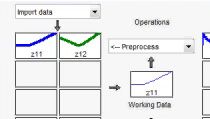Online and Recursive System Identification | System Identification, Part 4
From the series: System Identification
Brian Douglas, MathWorks
Online system identification algorithms estimate the parameters and states of a model as new data is measured and available in real-time or near real-time. Brian Douglas covers what online system identification is, why it’s a good option for real-time situations, and the general ideas behind how it works. Due to the real-time nature of these algorithms, computational time and resources play a significant role. Therefore, all of the fancy nonlinear regressors, and nonlinear output functions, and optimization algorithms shown in the previous videos in this series might produce a good answer, but not necessarily one that can be completed during real-time operation.
Published: 3 Jan 2022




